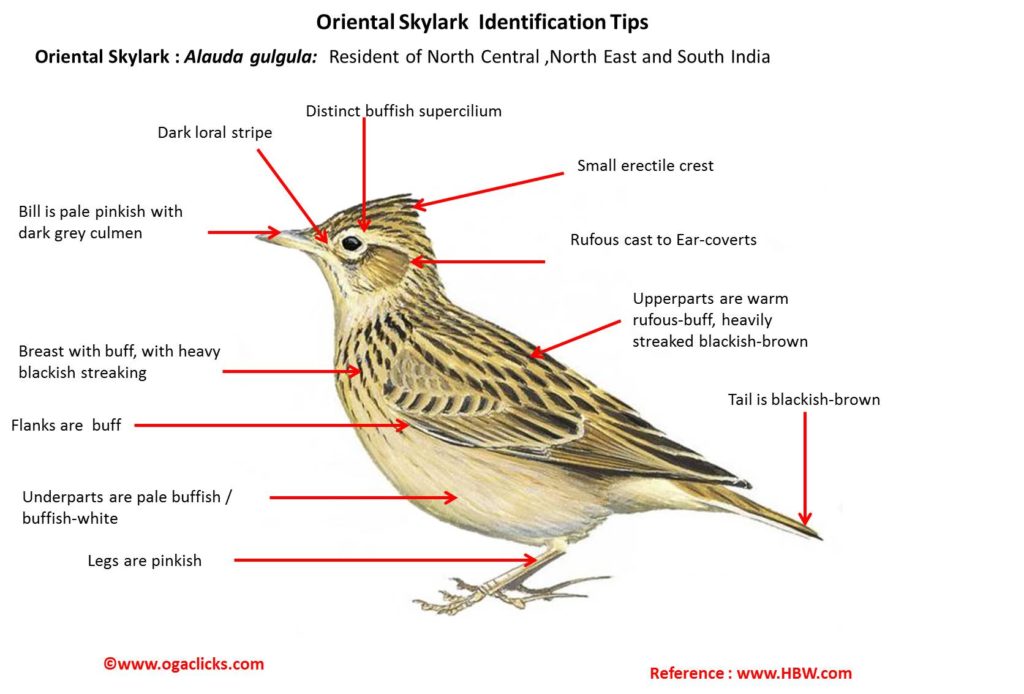
Oriental Skylark Alauda gulgula
Etymology:
- Alauda : Celtic name for lark meaning Great singer derived from al –great; aud –song..
- Gulgula : Punjabi word for globular
Vernacular name: Hindi: Bharat, Chandul, Kash: Dider, Didru, Pun: Chhota chandol, Ben: Jhunti bharat, Tibetan: Cho-mo, Nam-che, Guj: Jal agan, Bharath chandul, Mar: Bharat, Prachya Chandol, Te: Bharata pitta, Nela picuka, Bharadwaj pakshi, Mal: Vanampatikkili, Kan: Bharadwaja, Sinh: Gomaritta
Distribution in India: Widespread resident in India
Description: Size of 15-16 cm, Wt. of 24-30g. It is a small lark with medium-long and thin bill, fairly short tail, short -primary projection, small erectile crest. The nominate race has fairly distinct buffish supercilium. The crown and upperparts are warm rufous-buff with heavily streaked blackish-brown. The wings are blackish-brown or dark grey-brown, upperwing-coverts and tertials have buff tips and edges. The remiges have narrow rufous edges; tail is blackish-brown, central feather pair with brownish edges, outermost pair light rufous-buff; light rufous-buff below, deepest on breast, blackish streaks on breast extending variably to flanks. The bill is pale pinkish with dark grey culmen; legs pale pinkish. Both the sexes are alike in plumage, female on average smaller.
Habitat: It is found in open habitat like grassland and cultivation, also saline coastal marshes and mudflats, dry edges of lakes, rivers and paddy fields, and semi-desert. It is found also in large forest clearings, lowlands and middle elevations. It is found up to 4300 m.
Food habits:It eats seeds and insects. Nestlings observed to be fed with moths and caterpillars and with insect larvae. It will Ingest grit for digestion. It forages on ground, singly, in pairs or in loose flocks.
Breeding habits: They breed in Mar–Aug in India. The mating display by male is a song flight at great height, hovering with quivering wing beats for long periods, tail closed throughout. The nest is a cup of grass, lined with finer grass, hair or rootlets, in depression on ground, generally sheltered by tuft of grass or mound of earth. They lay a clutch of 2–5 eggs; incubation done by female alone. The incubation period is 10–11 days. The chicks are fed by both parents and leave the nest at 10 days from hatching The fledge period is 14-15 days.